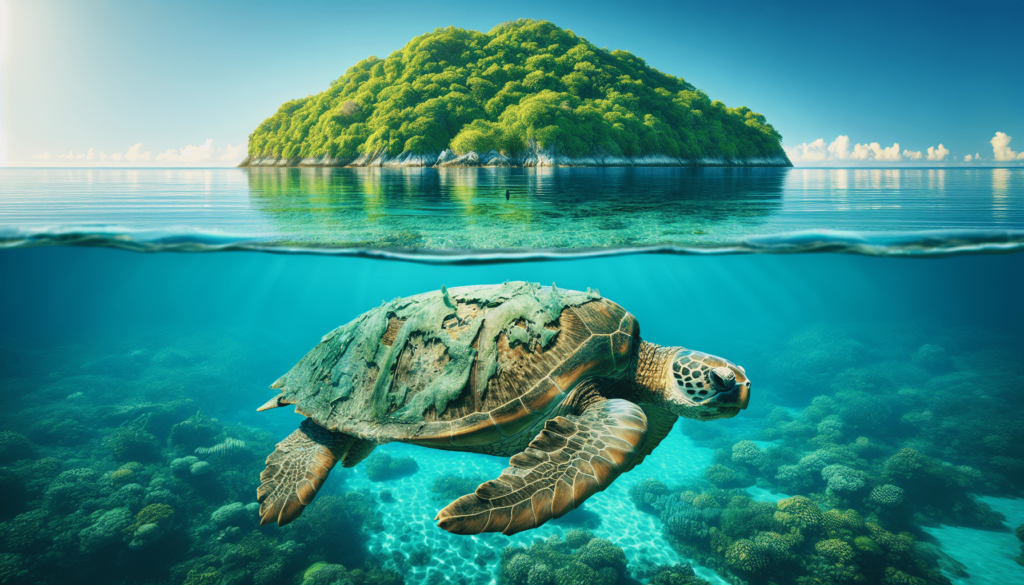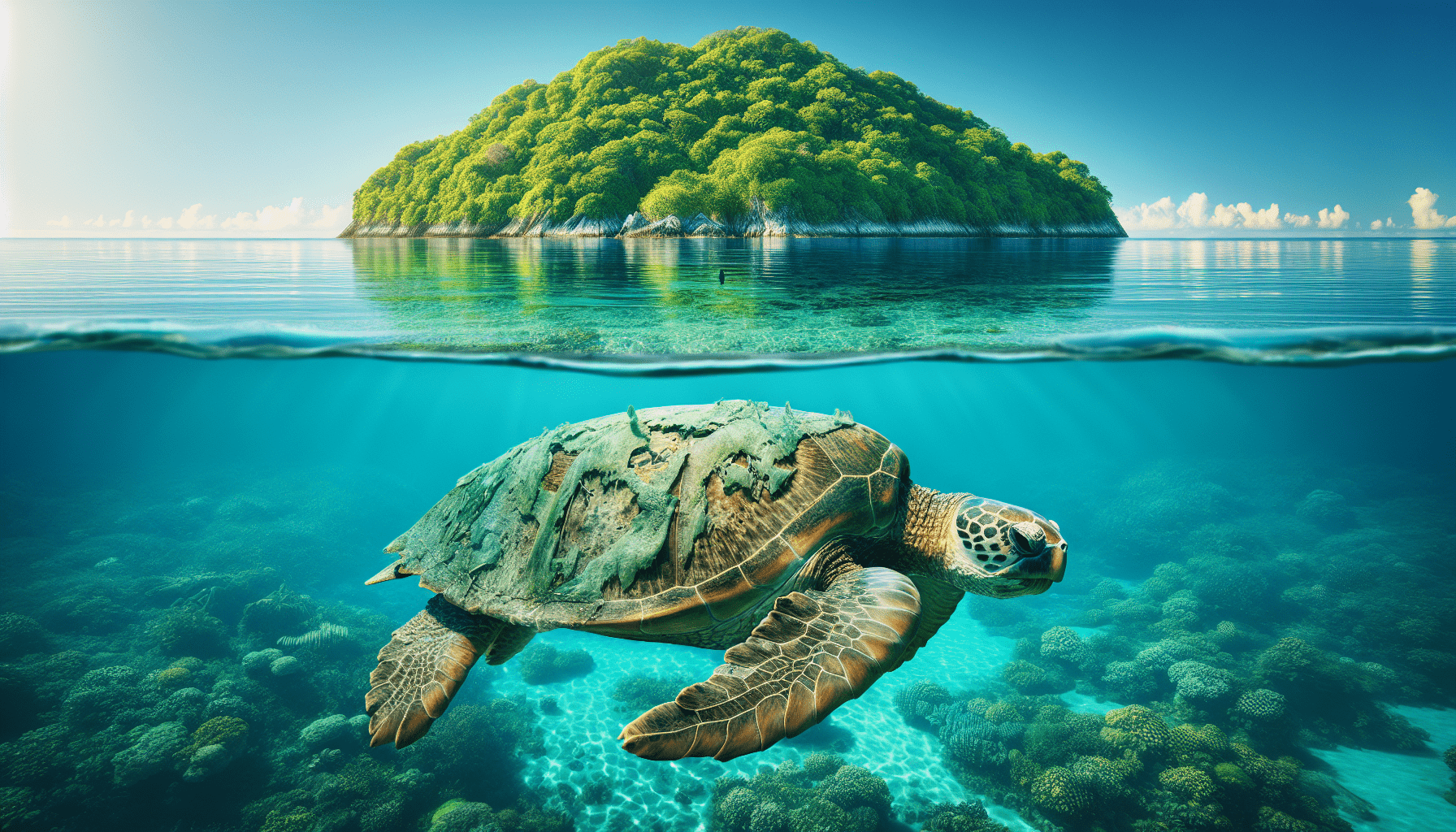Imagine a world where time moves at a different pace, a world where turtles exist as serene inhabitants, silently observing the passage of centuries. Can it be true? Can turtles really live up to 500 years? The answer to this intriguing question lies within the depths of their ancient and mysterious existence. Join us on a journey into the fascinating realm of these majestic creatures as we unravel the secrets behind their remarkable longevity.
Introduction
Welcome to this comprehensive article on turtle longevity! Turtles are fascinating creatures that have captured the curiosity of humans for centuries. In this article, we will explore the factors that contribute to the lifespan of turtles, learn about the oldest recorded turtles in history, understand the differences between turtles and tortoises in terms of longevity, and discover various techniques used to estimate turtle age. Furthermore, we will delve into the environmental impact on turtles, discuss conservation efforts to protect them, explore the cultural significance of turtles, and uncover their presence in popular culture. So, sit back, relax, and prepare to dive into the world of these intriguing reptiles!
Turtle Longevity
Turtles: An Ancient Species
Turtles are remarkable creatures that have been around for millions of years. They belong to the reptile class and are widely known for their protective shells. The origin of turtles can be traced back to the late Triassic period, making them one of the oldest reptile groups on Earth. Their ability to adapt to different habitats and survive for such a long time is a testament to their resilience.
Longest-Lived Turtle Species
Among the vast variety of turtle species, some have been found to live exceptionally long lives. One such species is the Aldabra giant tortoise, known for its incredible longevity. In fact, Aldabra giant tortoises have been known to live up to more than 150 years. Another long-lived turtle species is the Galápagos giant tortoise, which has been reported to live for over 100 years. These turtles serve as a testament to the potential for longevity within the turtle world.
Factors Affecting Turtle Lifespan
Several factors influence the lifespan of turtles. Genetics play a significant role, as some species simply have longer lifespans than others. Additionally, environmental conditions such as temperature, humidity, and access to food and water can impact how long a turtle lives. Turtles that reside in protected areas with minimal disturbances and access to ample resources tend to have longer lifespans compared to those living in degraded habitats. Furthermore, predation, disease, and human activities can also influence turtle lifespan.

Oldest Recorded Turtles
Adwaita: The Giant Tortoise
Adwaita, a Seychelles giant tortoise, holds the honor of being one of the oldest turtles ever recorded. He resided in the Alipore Zoological Gardens in Kolkata, India, and lived for an estimated 255 years. Adwaita’s remarkable longevity became known when he passed away in 2006, leaving behind a legacy of endurance and resilience.
Jonathan: The Seychelles Giant Tortoise
Another remarkable turtle is Jonathan, a Seychelles giant tortoise residing on the island of Saint Helena in the South Atlantic Ocean. Born in 1832, Jonathan has lived for over 189 years and counting. As the world’s oldest known living terrestrial animal, he has witnessed significant historical events throughout his lifetime and continues to amaze researchers and visitors alike with his longevity.
Tu’i Malila: The Radiated Tortoise
Tu’i Malila, a radiated tortoise, is another notable turtle that holds a legendary status. She was gifted to the Tongan royal family by Captain James Cook in 1777 and lived until 1965, reaching an estimated age of 188 years. Tu’i Malila symbolizes the connection between humans and turtles and highlights the potential for long and meaningful relationships with these ancient creatures.
Ming: The Ocean Quahog
While turtles are often synonymous with tortoises, it’s essential to mention Ming, an ocean quahog clam. Ming lived an astonishing 507 years beneath the icy waters of the North Atlantic. As the oldest living animal ever recorded, Ming’s longevity fascinates scientists and raises questions about the potential for extended lifespans in various species.
Turtles vs. Tortoises
Differentiating Turtles and Tortoises
Though often used interchangeably, the terms “turtle” and “tortoise” refer to distinct groups of species. Turtles are aquatic or semi-aquatic reptiles, characterized by streamlined shells and webbed feet adapted for swimming. Tortoises, on the other hand, are exclusively terrestrial reptiles known for their domed shells and sturdy limbs made for traversing land. Understanding the differences between turtles and tortoises is crucial in comprehending the variations in their lifespans.
Lifespan Variations Between Turtles and Tortoises
While some turtle and tortoise species may have similar lifespans due to their shared evolutionary history, there are notable differences in their longevity. Tortoises tend to live longer than turtles. As mentioned earlier, giant tortoises like the Aldabra and Galápagos species can live for more than a century. In contrast, the longest-lived turtles, such as the Blanding’s turtle, are known to reach up to around 80 years. The reasons behind these variations lie in their differing habitats, diets, and reproductive strategies.

Techniques to Estimate Turtle Age
Use of Growth Rings
One common method used to estimate the age of turtles is by analyzing their growth rings. These rings, which can be observed in a turtle’s shell or cross-sectioned bone, provide insights into its age. Much like tree rings, growth rings in turtles can be counted to determine how many years the individual has lived. However, this method is not always accurate, as environmental factors and the turtle’s specific growth patterns can affect the visibility and reliability of the rings.
Carbon Dating
Carbon dating is another technique utilized to estimate the age of ancient turtle specimens. By analyzing the levels of radioactive carbon in the turtle’s remains, scientists can determine the approximate age of the specimen. This method is particularly effective for dating fossils and providing valuable insights into the history and evolution of turtle species.
Genetic Analysis
Advancements in genetic analysis have also contributed to the estimation of turtle age. By examining the genetic material of a turtle, researchers can gain insights into its ancestral lineage and use this information to make informed estimations about its age. This method allows scientists to study the genetic diversity among populations, understand genetic adaptations, and explore the evolutionary history of turtles.
Environmental Impact on Turtles
Habitat Degradation
One of the most significant threats to turtles’ longevity is habitat degradation. Destruction of nesting sites, pollution of water bodies, and deforestation all contribute to the decline of suitable habitats and the disruption of natural ecosystems. When turtles lose their habitats, they face challenges in finding suitable places to lay their eggs, find food, and seek refuge. These disturbances have severe implications for their survival and ultimately impact their lifespan.
Climate Change
The effects of climate change pose a significant threat to turtles worldwide. Rising temperatures, changing weather patterns, and altered ocean currents can disrupt the delicate balance of turtle habitats. For instance, rising sea levels can destroy nesting beaches, where female turtles lay their eggs. Additionally, changes in temperature can skew sex ratios among hatchlings. The combined impact of these climate-related changes can have dire consequences for turtles’ ability to reproduce and survive, potentially affecting their longevity.
Pollution and Toxins
The pollution of aquatic environments poses a significant threat to turtles. Plastic debris, chemical pollutants, oil spills, and excess nutrients from human activities can contaminate their habitats and disrupt their health. Turtles may accidentally consume plastic, mistaking it for food, leading to internal injuries or blockages. Exposure to toxic chemicals can weaken their immune systems and make them more susceptible to diseases. The accumulation of pollutants over time can harm turtles and shorten their lifespans.
Human Activities
Human activities, such as illegal hunting, poaching, and wildlife trade, pose a direct threat to turtles’ survival. The demand for turtle shells, meat, and eggs in some cultures fuels the illegal wildlife trade, pushing several turtle species to the brink of extinction. The incidental capture of turtles in fishing gear, as well as habitat destruction due to coastal development, also contribute to their declining populations. These factors, combined with the pressures of climate change and pollution, create a grim outlook for the longevity of turtles worldwide.
Conservation Efforts for Turtles
Protection of Nesting Sites
To ensure the survival of turtles, efforts are being made around the world to protect and conserve their nesting sites. Sanctuaries, reserves, and protected areas are established to safeguard beaches and dunes where turtles lay their eggs. These protected zones often implement strict regulations to control human activities and prevent disturbances during the nesting season. By preserving these critical habitats, conservationists aim to provide a safe environment for turtles to reproduce and increase their chances of longevity.
Reduction of Illegal Wildlife Trade
Addressing the issue of illegal wildlife trade is crucial in protecting turtles and ensuring their survival. Collaboration among governments, law enforcement agencies, and conservation organizations is necessary to combat this illegal activity. Enhanced monitoring, stricter regulations, and public awareness efforts are essential in reducing the demand for turtle products and curbing the illegal trade. By reducing the pressures of poaching and trafficking, turtles can have a better chance at living longer lives in the wild.
Strengthening Laws and Regulations
To protect turtles effectively, it is necessary to strengthen and enforce laws and regulations that safeguard their habitats and control human activities that threaten their survival. Governments and international bodies are working together to establish frameworks that promote responsible conservation practices, regulate fishing practices, and reduce pollution levels. By creating legal frameworks that prioritize the survival of turtles and their habitats, the chances of their longevity are significantly improved.
Educational Programs and Awareness
Educational programs and public awareness campaigns play a vital role in the conservation of turtles. By educating the public about the importance of turtles in ecosystems, their role in maintaining biodiversity, and the threats they face, people can become advocates for their protection. Raising awareness about responsible wildlife interactions, reducing plastic pollution, and supporting conservation efforts empowers individuals to take action and contribute to the longevity of turtles.
Human Perception of Turtles
Symbolism
Turtles hold various symbolic meanings across different cultures and societies. In many belief systems, turtles represent longevity, wisdom, and patience. Their slow and deliberate nature is often associated with endurance and the ability to navigate life’s challenges with grace. Turtles can serve as powerful symbols of resilience and the wisdom gained through the passage of time, making them revered and admired creatures in many cultures.
Cultural Significance
Turtles hold immense cultural significance in numerous societies worldwide. In some Native American cultures, turtles are revered as sacred creatures, seen as symbols of creation and the earth. In several Asian cultures, turtles are symbols of good luck, longevity, and harmony. Additionally, turtles are associated with creation myths and legends in various African, South American, and Pacific Island cultures. They often represent the connection between humans and nature, highlighting the importance of conservation and respect for the natural world.
Turtles in Folklore and Mythology
Turtles have found their way into countless folklore and mythological tales across different civilizations. From the story of the World Turtle in Hindu mythology, which supports the earth on its back, to the Native American legend of the Great Turtle who carried the weight of the world on its shell, turtles have captivated the human imagination and become integral figures in these stories. Their presence in folklore and mythology serves to validate their status as enduring and mythical creatures in the eyes of humanity.
Turtles in Popular Culture
Turtles in Art
Throughout history, turtles have been a popular subject in art. From ancient cave paintings to modern-day sculptures, turtles have been depicted in various art forms. They often represent themes of wisdom, longevity, and the beauty of nature. Artists use their unique features, such as their shells and distinctive limbs, to create visually stunning works of art that celebrate the grace and resilience of turtles.
Turtles in Literature and Film
Turtles have also made their mark in literature and film. In children’s literature, characters like the famous Teenage Mutant Ninja Turtles have captured the hearts of millions. These fictional turtles depict them as heroes, showcasing their intelligence, strength, and ability to overcome obstacles. Turtles also appear in more serious works of literature, representing themes of longevity, wisdom, and the passage of time. In films, turtles often play prominent roles in nature documentaries, showcasing their incredible journeys, mating rituals, and interactions with other species.
Mascots and Logos
Turtles have become mascots and symbols for various organizations, sports teams, and institutions. Their traits of resilience, longevity, and wisdom make them ideal representatives for these entities. Whether in sports teams like the University of Maryland Terrapins or in the logos of conservation organizations, turtles are chosen to embody the values and ideals of these groups. Their presence as mascots and logos helps raise awareness about their plight and sparks conversations about conservation efforts.
Conclusion
Turtles, with their ancient lineage and remarkable longevity, have captivated humans for centuries. As we have explored in this comprehensive article, their lifespans can vary greatly depending on factors such as species, habitat, and environmental conditions. It is crucial that we understand and appreciate these incredible creatures, as well as the threats they face. By focusing on conservation efforts, raising awareness, and fostering a sense of respect and admiration for turtles, we can take steps towards ensuring their survival and allowing future generations to marvel at their enduring presence on Earth. So, let us celebrate the beauty and wisdom of turtles, and strive to protect them so that they may continue to amaze us for years to come.
